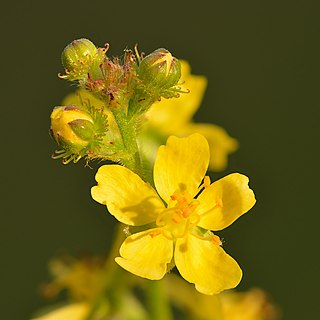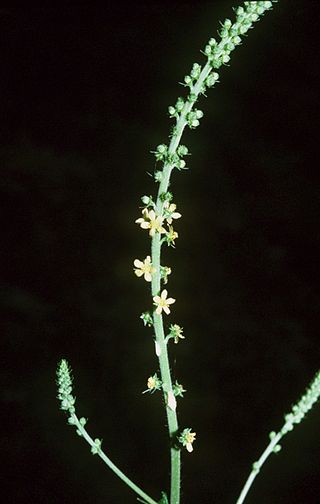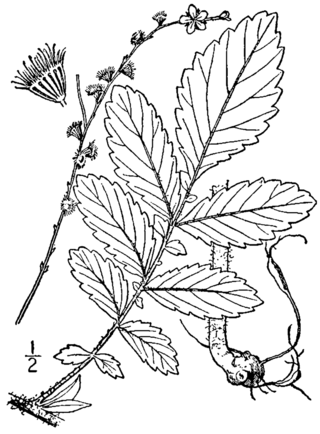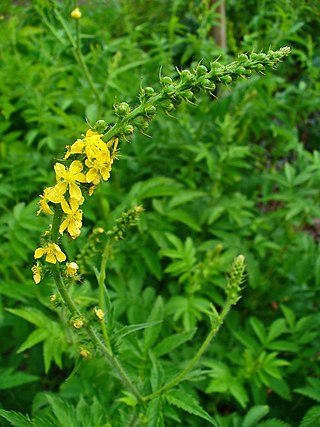
In botany, a fruit is the seed-bearing structure in flowering plants that is formed from the ovary after flowering.

A rose is either a woody perennial flowering plant of the genus Rosa, in the family Rosaceae, or the flower it bears. There are over three hundred species and tens of thousands of cultivars. They form a group of plants that can be erect shrubs, climbing, or trailing, with stems that are often armed with sharp prickles. Their flowers vary in size and shape and are usually large and showy, in colours ranging from white through yellows and reds. Most species are native to Asia, with smaller numbers native to Europe, North America, and northwestern Africa. Species, cultivars and hybrids are all widely grown for their beauty and often are fragrant. Roses have acquired cultural significance in many societies. Rose plants range in size from compact, miniature roses, to climbers that can reach seven meters in height. Different species hybridize easily, and this has been used in the development of the wide range of garden roses.

Caraway, also known as meridian fennel and Persian cumin, is a biennial plant in the family Apiaceae, native to western Asia, Europe, and North Africa.

Potentilla is a genus containing over 300 species of annual, biennial and perennial herbaceous flowering plants in the rose family, Rosaceae.

Potentilla erecta is a herbaceous perennial plant belonging to the rose family (Rosaceae).

Rhinanthus minor, known as yellow rattle, is a herbaceous wildflower in the genus Rhinanthus in the family Orobanchaceae. It has circumpolar distribution in Europe, Russia, western Asia, and northern North America. An annual plant, yellow rattle grows up to 10–50 centimetres (3.9–19.7 in) tall, with upright stems and opposite, simple leaves. The fruit is a dry capsule, with loose, rattling seeds.

Agrimonia, commonly known as agrimony, is a genus of 12–15 species of perennial herbaceous flowering plants in the family Rosaceae, native to the temperate regions of the Northern Hemisphere, with one species also in Africa. The species grow to between 0.5–2 m (1.6–6.6 ft) tall, with interrupted pinnate leaves, and tiny yellow flowers borne on a single spike.

Pyrgus malvae, the grizzled skipper, is a butterfly species from the family Hesperiidae. It is a small skipper (butterfly) with a chequered pattern on its wings that appears to be black and white. This butterfly can be found throughout Europe and is common in central and southern regions of England. The butterfly prefers three major types of habitat: woodland, grassland, and industrial. Referenced as a superspecies, Pyrgus malvae includes three semispecies: malvae, malvoides, and melotis. Eggs are laid on plants that will provide warmth and proper nutrition for development. As larvae, their movement is usually restricted to a single plant, on which they will build tents, unless they move onto a second host plant. Larvae then spin cocoons, usually on the last host plant they have occupied, where they remain until spring. Upon emerging as adult butterflies, grizzled skippers are quite active during the day and tend to favour blue or violet-coloured plants for food. They also possess multiple methods of communication; for example, vibrations are used to communicate with ants, and chemical secretions play a role in mating. Exhibiting territorial behaviour, males apply perching and patrolling strategies to mate with a desired female.

Calyceraceae is a plant family in the order Asterales. The natural distribution of the about sixty species belonging to this family is restricted to the southern half of South America. The species of the family resemble both the family Asteraceae and the Dipsacaceae.

Oberthür's Grizzled Skipper is a species of skipper.

Fumaria officinalis, the common fumitory, drug fumitory or earth smoke, is a herbaceous annual flowering plant in the poppy family Papaveraceae. It is the most common species of the genus Fumaria in Western and Central Europe.

Lantana camara is a species of flowering plant within the verbena family (Verbenaceae), native to the American tropics. It is a very adaptable species, which can inhabit a wide variety of ecosystems; once it has been introduced into a habitat it spreads rapidly; between 45ºN and 45ºS and more than 1,400 metres in altitude.

Hypericum androsaemum, the shrubby St. John's wort, is a flowering plant in the family Hypericaceae. Commonly called tutsan or sweet-amber, the species is cultivated as an ornamental plant because of its striking red-tinted foliage, bright yellow petals, and its clusters of fruit which are large compared to other members of Hypericum. As such, various cultivars of the species have been bred which amplify its desirable characteristics. These include cultivars like 'Albury Purple' and 'Golden Tutsan' which have leaves with more pronounced purple and golden coloring, respectively.

Galium aparine, with common names including cleavers, clivers, catchweed "robin-run-the-hedge", and sticky willy among others, is an annual, herbaceous plant of the family Rubiaceae.

Agrimonia parviflora is a species of perennial herbaceous flowering plant. Small-flowered agrimony, harvestlice agrimony, swamp agrimony, and harvestlice are its most common names in the United States.

Pyrgus malvoides, the Southern Grizzled Skipper, is a species of skipper.

Agrimonia gryposepala is a small perennial flowering plant of the rose family (Rosaceae), which is native to North America. This plant was used by various indigenous peoples to treat medical problems such as diarrhea and fever.

Larrea divaricata, commonly known as chaparral, is a small evergreen bush in the family Zygophyllaceae. It is native to arid regions of South America, where it is known as jarilla or jarillo. It was first described in 1800 by the Spanish botanist Antonio José Cavanilles.

Agrimonia pubescens, the soft agrimony or downy agrimony, is a flowering plant in the genus Agrimonia, a member of the rose family. It grows in dry areas and woodlands.

Agrimonia procera is a species of flowering plant belonging to the family Rosaceae.























